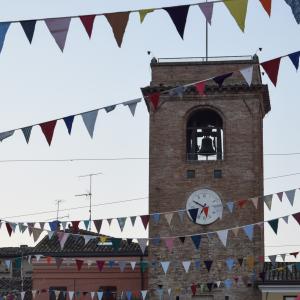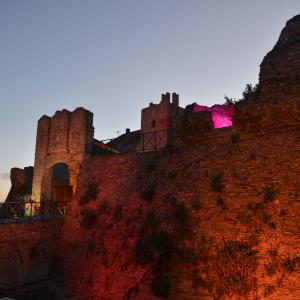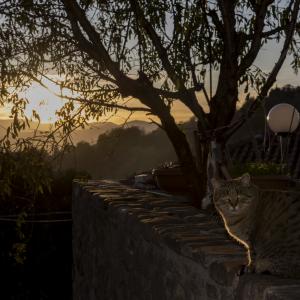Boroughs, villages and countryside
This itinerary covers a large part of the Conca Valley, passing through its most densely inhabited areas, although the last part is in the wild and unkempt surrounding countryside, an extraordinary natural environment.
San Giovanni in Marignano>Morciano di Romagna>San Clemente>Coriano>Montecolombo>Montescudo>Gemmano
San Giovanni in Marignano,the former “granary of the Malatesta”, is an important town in the Malatesta Seignory plain. It still has its ancient walls and buildings, renovated in the 19th and 20th centuries.
Following the course of the Conca River leads us to Morciano di Romagna, the valley’s commercial capital and its most modern town that retains an unusual “20th-century” layout. After crossing hills covered in marvellous vines, take the road to San Clemente (unsurprisingly it is a “Wine City”), which has a small, fortified old centre.
The main town in the Marano Valley,which boasts excellent wine and oil production, is the lively town of Coriano. Well worth visiting here are the ruins of the small Malatesta Castle, the churches in the old town and the Parish Church of Montetauro. Nearby Marano Park offers visitors the chance to take a pleasant and relaxing walk.
The crest road, which leads from Coriano to Montecolombo and Montescudo,villages that dominate the left of the mid-Conca Valley, offers breathtaking views and marvellous natural landscape. Along the road, is the Castle of San Savino. In Montecolombo, a beautiful entrance gate leads to the delightful old town, which is enclosed by Malatesta walls. Nearby is Montescudo, where visitors should see the Municipal Tower and the ancient ice house.
In the surrounding countryside, visitors will find the small hamlet/castle of Albereto, the Sanctuary of Valliano, with frescoes dating from the 15th century, the annexed Ethnographical Museum (open subject to pre-booking, tel. 0541 864010) and Trarivi Church of Peace with its small Eastern Gothic Line Museum.
The very last part of the itinerary is in Gemmano. Although the village itself is of little historical importance (it was destroyed during the Second World War), the area’s natural heritage is extremely appealing. Onferno Caves, as a UNESCO UNIVERSAL HERITAGE, (tel. 389 199 1683 for visits), just a few kilometres from the village, are a surprising and spectacular karstic complex in the Orientated Nature Reserve (which has a small museum used primarily for educational activities).
An underground river has carved the chalky rock into narrow tunnels, rooms and corridors that house a huge colony of bats and that windtheir way for about 750 metres underground.



